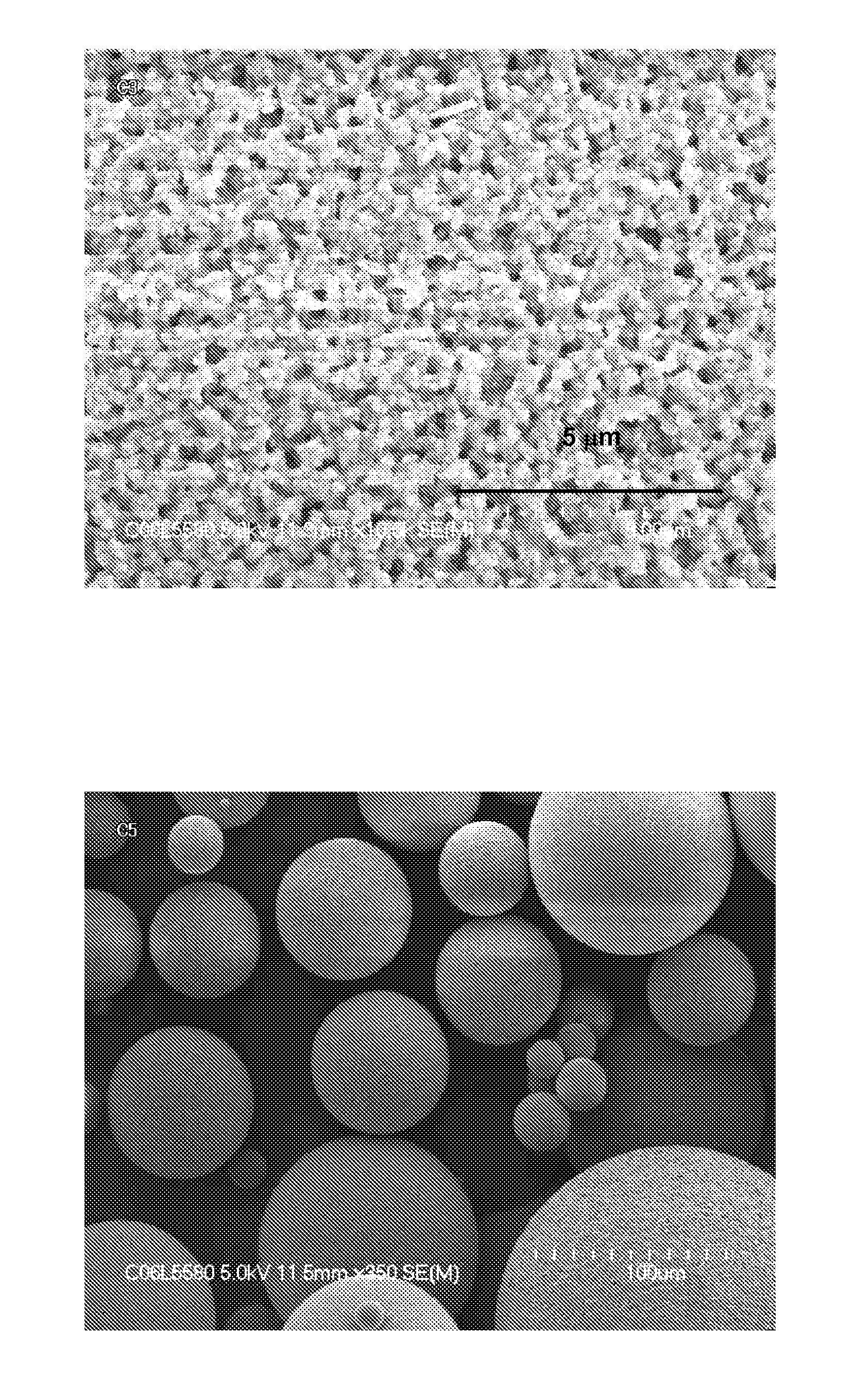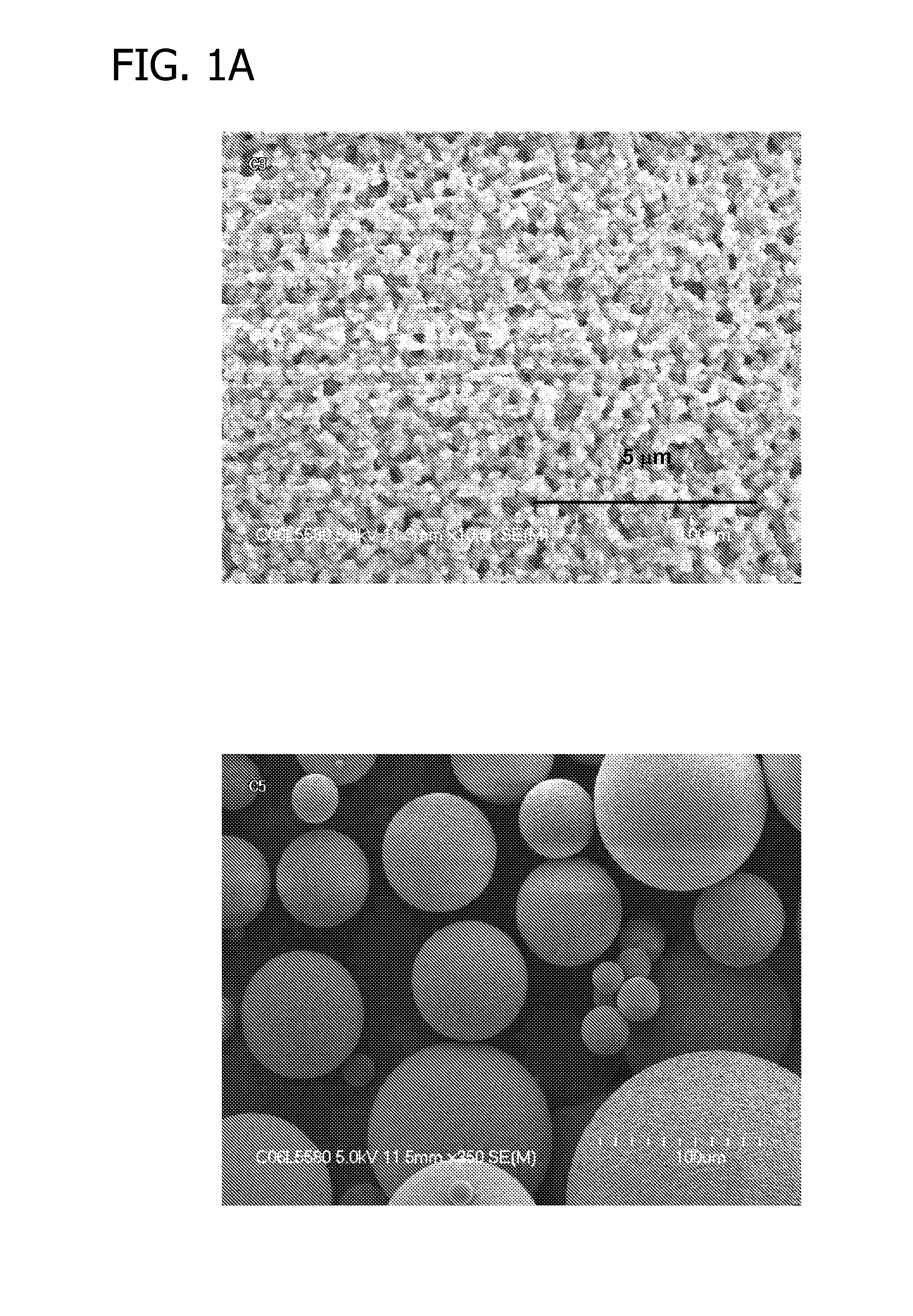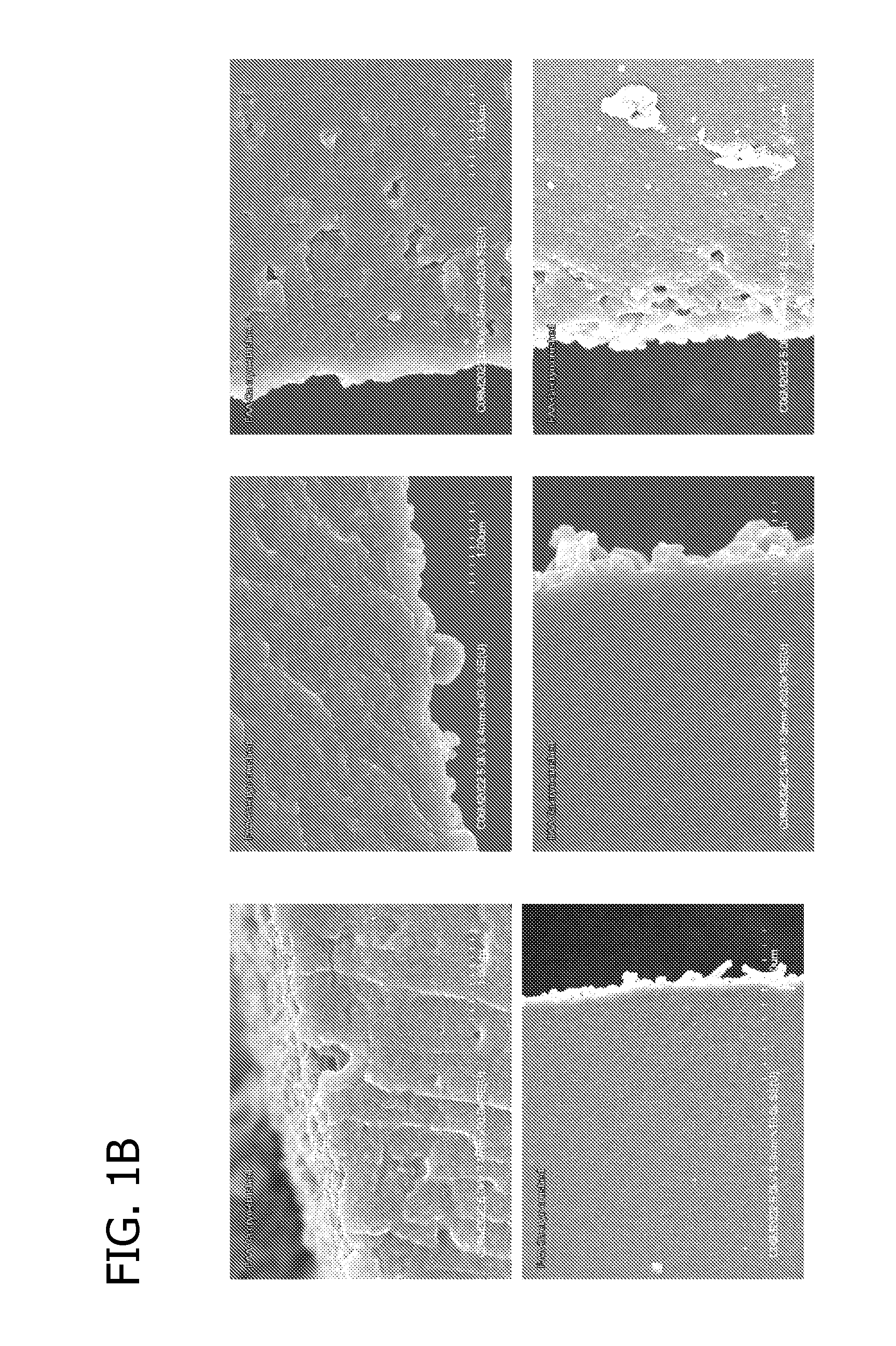Crosslinked cation exchange polymers, compositions and use in treating hyperkalemia
a cation exchange polymer and crosslinked technology, applied in the direction of cation exchanger materials, extracellular fluid disorder, metabolic disorder, etc., can solve the problems of gastric irritation, diarrhea and other gastrointestinal side effects, and the composition of polymer compositions is known to have patient compliance issues, taste and/or texture, and other problems, to achieve the effect of the same tolerability
- Summary
- Abstract
- Description
- Claims
- Application Information
AI Technical Summary
Benefits of technology
Problems solved by technology
Method used
Image
Examples
example 1
DVB as Crosslinking Monomer
[0171]The polymerization was carried out in a 1 L three-neck Morton-type round bottom flask equipped with an overhead mechanical stirrer with a Teflon paddle and a water condenser. An organic phase was prepared by mixing MeFA (54 g), DVB (6 g) and LPO (0.6 g), and an aqueous phase was prepared by dissolving PVA (3 g) and NaCl (11.25 g) in water (285.75 g). The organic and aqueous phases were then mixed in the flask and stirred at 300 rpm under nitrogen. The flask was immersed in a 70° C. oil bath for 3 hours, and cooled to room temperature. The internal temperature during the reaction was about 65° C. The solid product was washed with water and collected by decanting off supernatant solution. The white solid was freeze-dried, affording dry solid polyMeFA particles (or beads) (56.15 g, 94%).
[0172]Hydrolysis was carried out in the same setup as for the polymerization. PolyMeFA particles (48.93 g) from above were suspended in KOH solution (500 g, 10 wt. %) an...
example 2
Polymer Synthesis using Two Crosslinking Monomers
[0173]Multiple suspension polymerizations were carried out in a manner substantially similar to Example 1. The synthesis conditions and results are summarized in Table 3. Compared to Example 1, the addition of ODE as a second crosslinker in all ratios tested increased the yield after the hydrolysis step. Therefore the overall yield for polyFAA bead synthesis was improved to a level of greater than 90%.
TABLE 3Synthesis conditions and selected propertiesAqueous PhaseOrganic PhasepH beforeH afterMeFADVBODEYieldSwellingBCExp #BufferNaClpolymzpolymzwt. %wt. %wt. %Susp.Hydro.OverallRatiommol / gComp 1no3.75%nm4.00955098%64%63%2.669.59Comp 2no3.75%nm3.909010094%82%77%1.528.72Comp 3no3.75%nm3.508020089%90%80%1.015.96Ex 789no3.75%5.103.50908295%100% 95%1.588.70Ex 7920.25%3.50%8.303.9594%100% 94%1.498.76Ex 7930.50%3.25%8.455.2894%95%89%1.448.62Ex 8080.50%3.25%nmnmnmnm92%nm8.76Ex 8110.50%3.25%7.255.05nmnm93%nmnmEx 8150.75%2.50%7.245.26nmnm88%nmnmE...
examples 3-5
Synthesis of FAA Beads with DVB / ODE
[0174]The polymers of examples 3-5 were prepared as follows. A polymerization was carried out in a 1 L three-neck Morton-type round bottom flask equipped with an overhead mechanical stirrer with a Teflon paddle and a water condenser. An organic phase was prepared by mixing MeFA, DVB, ODE and LPO (0.6 g), and an aqueous phase was prepared by dissolving PVA (3 g) and NaCl (11.25 g) in water (285.75 g). The organic and aqueous phases were then mixed in the flask, and stirred at 300 rpm under nitrogen. The flask was immersed in a 70° C. oil bath for 5 hours, and cooled to room temperature. The internal temperature during reaction was about 65° C. The solid product was washed with water and collected by filtration. The white solid was freeze-dried, affording dry solid polyMeFA beads.
[0175]Hydrolysis was carried out in the same setup as for the polymerization. PolyMeFA beads from the polymerization reaction were suspended in a NaOH solution (400 g, 10 wt...
PUM
| Property | Measurement | Unit |
|---|---|---|
| Fraction | aaaaa | aaaaa |
| Fraction | aaaaa | aaaaa |
| Fraction | aaaaa | aaaaa |
Abstract
Description
Claims
Application Information
 Login to View More
Login to View More - R&D
- Intellectual Property
- Life Sciences
- Materials
- Tech Scout
- Unparalleled Data Quality
- Higher Quality Content
- 60% Fewer Hallucinations
Browse by: Latest US Patents, China's latest patents, Technical Efficacy Thesaurus, Application Domain, Technology Topic, Popular Technical Reports.
© 2025 PatSnap. All rights reserved.Legal|Privacy policy|Modern Slavery Act Transparency Statement|Sitemap|About US| Contact US: help@patsnap.com



